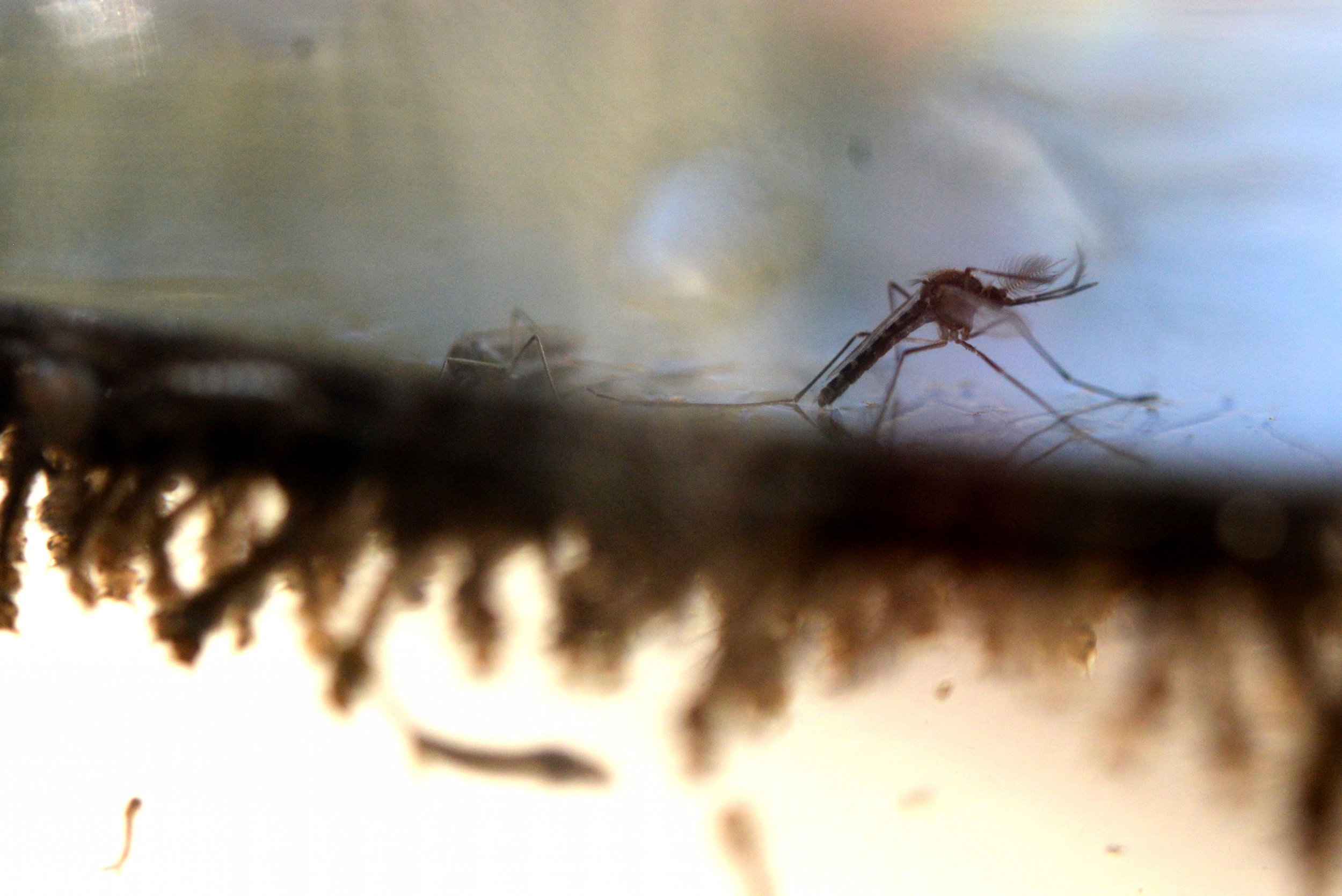
The Aedes aegypti mosquito is the primary species for transmitting dangerous pathogens such as Zika, dengue and yellow fever, infecting hundreds of millions of people around the world every year.
Many scientists think that having a better understanding of the insect's genome—the complete set of genetic material in an organism—could help to reduce infections. To that end, an international team of researchers has mapped the genome of Aedes aegypti, uncovering several new genes—including some that could explain why the mosquitoes prefer biting certain people.
"A group of 72 scientists was able to glue together thousands of pieces of DNA code into the most complete genetic blueprint of the deadly yellow fever mosquito," Gordana Rašić, an author of a Nature study describing the results, from the QIMR Berghofer Medical Research Institute in Brisbane, Australia, told Newsweek.
"We were able to improve our knowledge of thousands of genes and discover many new genes we didn't know were in this mosquito. Basically, we now know how many genes there are and where they are on a mosquito's chromosomes. We have identified some smell genes in these mosquitoes that could help to explain why they target some people instead of others. Now we can go in, with great precision, to find genes that determine how they hunt us."
According to Rašić, identifying genes such as these could help researchers curb disease transmission, by using a variety of methods, such as genetically modifying mosquito populations.
"Thanks to this research, we can now rapidly move forward and identify which genes make them resistant to insecticides and then design better insecticides; which genes make them transmit dengue and other viruses and engineer mosquitoes that are unable to transmit these viruses," she said. "We could engineer mosquitoes that are sterile or never develop into biting females and use them to eliminate local mosquito populations. This research will power many new solutions to control this mosquito and stop the diseases they transmit."
Until recently, scientists only had incomplete fragments of the mosquito's genome to work with, hampering research into the species.
"We decided to re-sequence and assemble the Aedes aegypti genome because the assembly we had to work from before, generated in 2007, was highly fragmented and incomplete, which was a significant frustration to us and to others in the mosquito research community," Benjamin Matthews, an author of the study from The Rockefeller University, told Newsweek.
"Having a complete and correct genome assembly provides a critical roadmap to the genome of any species, and in our case, is already helping to identify candidate genes that may be involved in specific behaviors," he said. "We are much more confident that this assembly is complete, and we identified dozens of new genes that were not found in the previous assembly."
The international team began their undertaking in response to the Zika virus outbreak in 2015-2016. With the help of the latest advances in genomics, they now have the most "comprehensive catalog" of A. aegypti's DNA.
"I was sick of hearing that my lab members couldn't find complete versions of the genes we were working on," Leslie Vosshall, another author of the study from Rockefeller, said in a statement. "So, I took my frustration to Twitter, and quickly assembled the Aedes Genome Working Group."
Equipped with a high-quality map of the mosquito's genome, the researchers were then able to characterize previously unidentified genes. For example, they found genes that code for ionotropic receptors (IR), which detect odors in an environment and help guide the mosquitoes towards important locations, such as egg-laying sites, or human skin.
This new information could help researchers to develop novel insect repellants that interfere with the mosquito's ability to find and bite us.
The team also found that some mosquitoes had multiple copies of genes that code for glutathione S-transferase (GST), an enzyme that neutralizes the toxic effects of insecticides. This discovery indicates that A. aegypti is evolving to protect itself against man-made toxins, according to Matthews, but now scientists may be able to create new insecticides that can kill even resistant mosquitoes.
Aside from enabling the development of new techniques to kill or repel the mosquito, the new research will also benefit efforts to genetically modify populations of A. aegypti. Because only the females of the species feast on blood, reducing their number would mitigate disease transmission rates.
By looking at the genetic information, the team was able to pinpoint genes responsible for determining the sex of a mosquito, a discovery that could be used to engineer male-only populations.
"No females, no biting, no disease," Matthews said.
The team says that the latest findings are just a glimpse of the genome's potential applications. It has been available online for more than a year now and scientists around the world have been adding their own data, while dozens, if not hundreds have already used it in their work. This makes the genome a hugely valuable resource for those conducting research into the mosquito.
"The implications of this research are extremely broad, and will be useful to anyone interested in understand the genetic basis of any aspect of mosquito biology, such as their development, blood-feeding and egg-laying behavior, ability to vector viral pathogens like dengue, yellow fever, Zika and chikungunya, the mechanisms underlying the evolution insecticide resistance, host preference, sex-determination," he said. "Genetically modified mosquitoes are increasingly being considered as a potential means of mosquito control, and a complete and correct genome assembly is essential to designing and developing effective and efficient strategies in this arena."
Furthermore, the latest research could also help scientists studying other animal species.
"Finally, this assembly is a blueprint for future genome assemblies of other species using modern sequencing technologies and analyses, and we hope that this will unlock the ability to generate high-quality genomes for a wide variety of species, providing the resources to understand their unique biology as well as the evolutionary mechanisms at work between species."
This article has been updated to include additional comments from Gordana Rašić and Benjamin Matthews.
Uncommon Knowledge
Newsweek is committed to challenging conventional wisdom and finding connections in the search for common ground.
Newsweek is committed to challenging conventional wisdom and finding connections in the search for common ground.
About the writer
Aristos is a Newsweek science reporter with the London, U.K., bureau. He reports on science and health topics, including; animal, ... Read more
To read how Newsweek uses AI as a newsroom tool, Click here.








